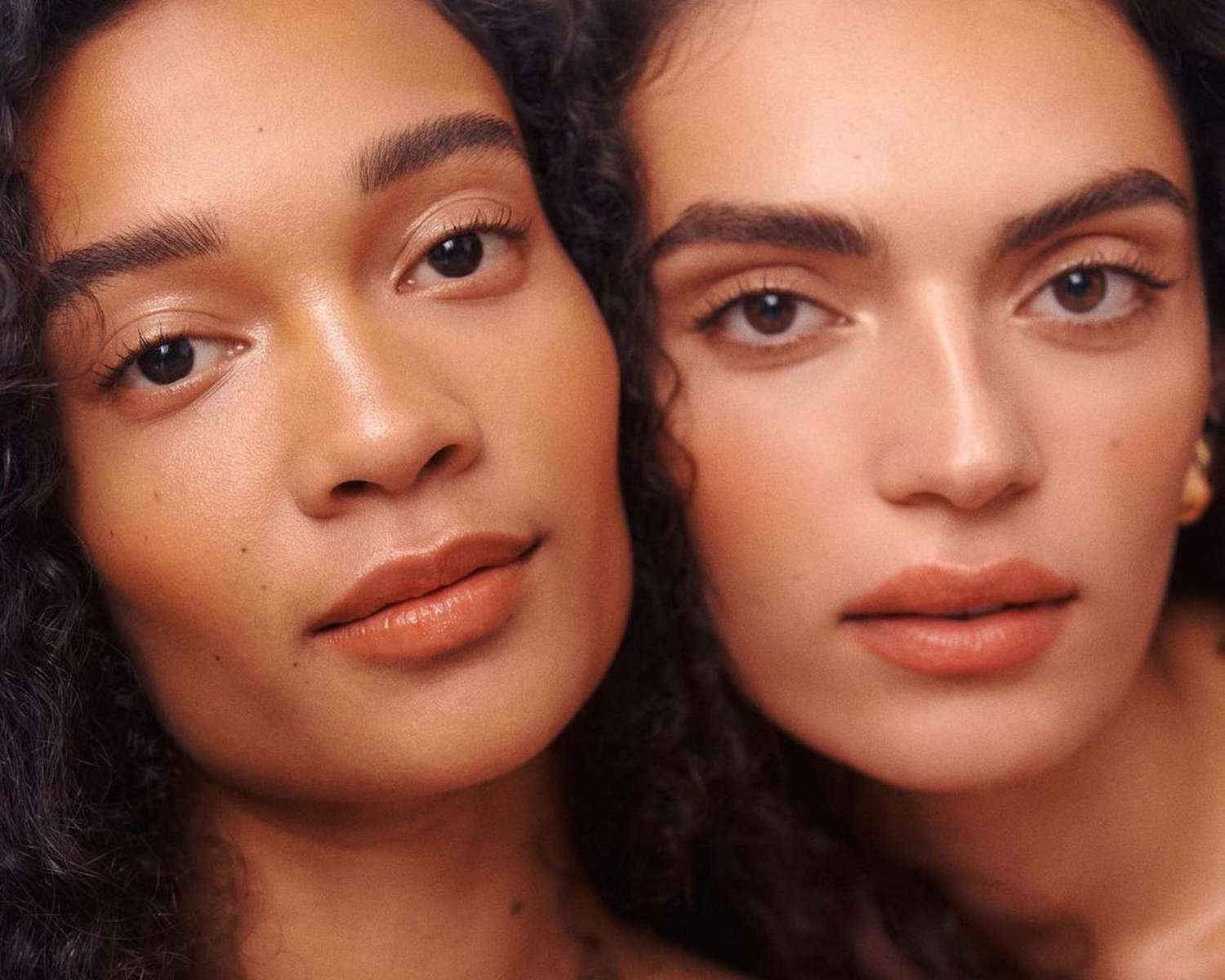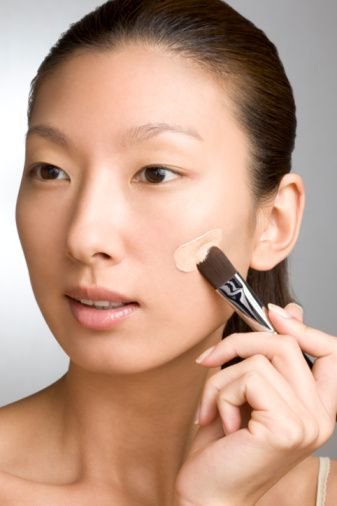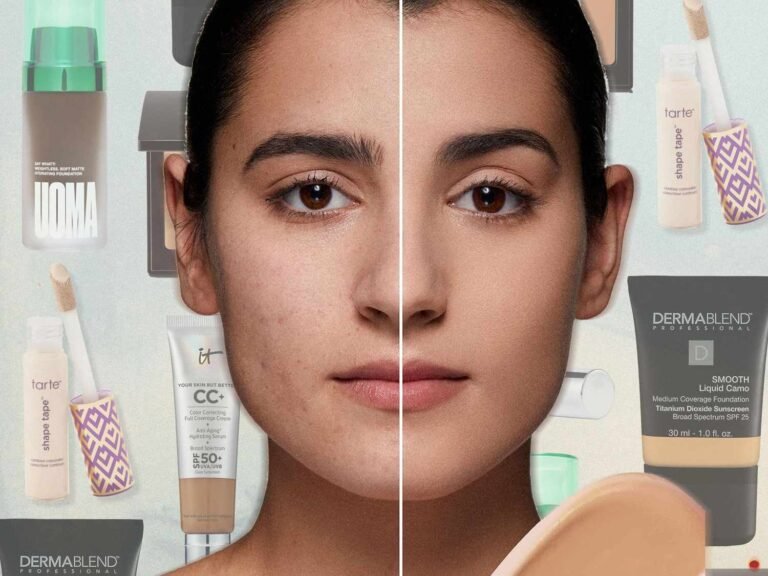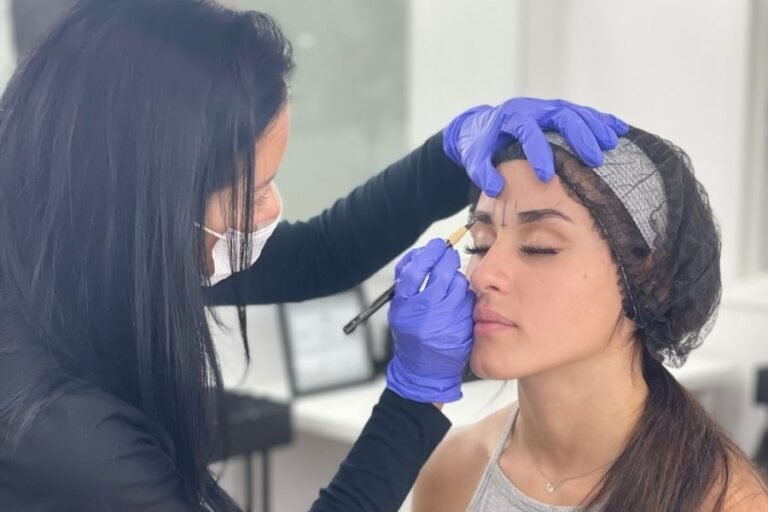Masterful Makeup: Foundation vs. Concealer Tactics Revealed
Foundation creates an even base for makeup, while concealer targets specific imperfections. Apply foundation first, then concealer for optimal coverage.
Mastering the art of a flawless makeup look starts with understanding the roles of foundation and concealer. These staples of beauty routines work hand in hand to achieve a polished complexion. Foundation acts as a canvas, evening out skin tone and providing a uniform surface for other products.
Concealer comes into play for more targeted issues like blemishes, dark circles, or discoloration. It offers heavier coverage than foundation, allowing for precise correction where needed. Knowing when and how to apply each can transform your makeup application into an effortless daily ritual and boost your confidence with a seamless finish.

Credit: www.instagram.com
The Essentials Of Masterful Makeup
Creating a flawless makeup look begins with understanding the essentials of foundation and concealer application. Mastering these basics enhances your overall appearance. It conceals imperfections and creates a smooth canvas for the rest of your makeup. Let’s dive into the specific roles and applications of foundation and concealer.
Purpose Of Foundation In Makeup
Foundation serves as the base layer in your makeup routine. It evens out skin tone and provides a uniform surface. Here’s how to apply it:
- Start with a clean, moisturized face.
- Choose the right shade for your skin tone.
- Apply a small amount with a brush, sponge, or fingertips.
- Blend well for a seamless look.
Remember to blend into your neck to avoid harsh lines. The right foundation can make a huge difference in your makeup’s appearance.
The Role Of Concealer
Concealer targets specific imperfections such as blemishes and dark circles. For best results, follow these steps:
- Select a concealer that matches your foundation or is one shade lighter.
- Apply directly on imperfections using a brush or fingertip.
- Dab gently to blend, do not rub.
- Set it with a light dusting of powder if needed.
A concealer hides what the foundation can’t and adds extra coverage for a flawless finish.

Credit: www.allure.com
Choosing The Right Shades
Picking the right shades of foundation and concealer is crucial for seamless makeup application. With numerous options available, it’s easy to feel overwhelmed. Let’s simplify this process and ensure that your makeup enhances your natural beauty perfectly.
Matching Skin Undertones
Your skin’s undertone is the warm, cool, or neutral hue that shows through the surface color of your skin. Identifying your undertone is the first step to finding foundation and concealer shades that truly match.
- Warm undertones often have a golden, peachy, or yellow cast to their skin
- Cool undertones might see hints of pink, red, or blue
- Neutral undertones have a balance of warm and cool notes
To check your undertone, look at the inside of your wrist in natural light. The color of your veins can give clues: blue/purple indicates cool, green hints at warm, and blue/green suggests neutral undertones.
Understanding Product Pigmentation
The pigmentation levels of your foundation and concealer affect how they cover and blend with your skin. A high-pigment product offers more coverage and is ideal for hiding blemishes or discoloration.
| Product Type | Coverage Level | Suitable For |
|---|---|---|
| Full-Coverage Foundation | High | Evening out skin tone, hiding imperfections |
| Lightweight Concealer | Low to Medium | Natural look, minor blemishes |
Experiment with different pigmentation levels to find what works best for your specific needs. Remember, a small amount of a high-coverage product goes a long way.
A swatch test in natural light is the best way to determine the right shade. Match foundation to your jawline and concealer to the area you wish to cover or brighten.
Foundation Fundamentals
Foundation is the cornerstone of any stellar makeup look. It creates a smooth canvas, evens out your skin tone, and sets the stage for the rest of your makeup. Understanding its basics is key to achieving a flawless complexion.
Different Types of FoundationsDifferent Types Of Foundations
Choosing the right foundation is crucial for the perfect match. Let’s explore the main types:
- Liquid Foundations: Versatile and blendable, they work for most skin types.
- Powder Foundations: Great for oily skin, offering a matte finish.
- Cream Foundations: Provide full coverage and are ideal for dry or mature skin.
- Stick Foundations: Convenient for touch-ups and targeted applications.
- Tinted Moisturizers: Light coverage and hydration, perfect for a natural look.
- Mineral Foundations: Good for sensitive skin, with a natural, non-comedogenic formula.
The Application Technique
Applying foundation correctly can make all the difference. Here’s how to ace the application:
- Start with a clean, moisturized face.
- Apply a primer to smooth the skin’s surface.
- Use the right tools: fingers, a sponge, or a foundation brush.
- Dab foundation onto your cheeks, forehead, chin, and nose.
- Blend outwards in gentle, circular motions.
- Build coverage as needed, but avoid over-applying to prevent cakiness.
- Set with a light dusting of translucent powder if desired.
Concealer Complexities
When it comes to ace makeup, knowing your concealers is key. Concealers work magic on spots, blemishes, and under-eye shadows. Yet, each product serves a unique purpose and technique. Let’s dive into the intricacies of liquid and cream concealers and uncover spot treatment strategies.
Liquid Vs. Cream Concealers
Selecting between liquid and cream concealers depends on the coverage you need.
- Liquid Concealers: Great for oily or combination skin types. They offer a lightweight texture and are less likely to crease.
- Cream Concealers: Perfect for dryer skins or those who need more coverage. They have a thicker consistency and stay on longer.
| Type | Best for | Coverage |
|---|---|---|
| Liquid | Oily/Combination Skin | Light to Medium |
| Cream | Dry/More Coverage Needed | Medium to Full |
Spot Treatment Strategies
Mastering spot concealing is an art. Use precise application to make imperfections vanish.
- Start with a small brush or a clean fingertip.
- Dab the concealer directly onto the blemish or spot.
- Gently blend the edges for a seamless finish.
Remember: Shade matching is critical for spot treatment. The concealer should mirror your skin tone for the best camouflage.
The Debate: Sequence Of Application
Choosing between foundation and concealer can be like picking your favorite flavor of ice cream – tough but delightful. A crucial step is knowing which to apply first. This choice can affect your makeup’s overall appearance. Let’s settle the debate on sequence. Discover the pros of each approach below.
Concealer Before Foundation
Why consider concealer first? Spot correcting stands out as a principal reason. By targeting troubles early, we promise a natural, blended canvas.
- Blemishes vanish with precision.
- Dark circles fade into the background.
- Less foundation ends up needed, ensuring a light, airy finish.
Yet, reapplication of concealer might follow for pesky spots that peek through.
Foundation Before Concealer
Foundation enthusiasts, take note: starting with a base might be your best bet. Offering a consistent coverage, it sets the stage for perfection.
- Begin with a gentle layer of foundation.
- Add concealer for a seamless blend.
- Use less concealer, thanks to the foundation’s groundwork.
It also presents an artful way to apply makeup without overdoing it.
Special Considerations
Perfect makeup starts with knowing the right techniques. Let’s dive into the specifics of hiding imperfections and highlighting beauty.
H3: Color-Correcting Under Eye CirclesColor-correcting Under Eye Circles
Select a color-correcting concealer that counteracts dark tones. For blueish circles, pick a peach or orange tint.
- Apply before foundation for severe circles.
- Blend gently with a sponge or finger.
- Top with foundation, then a skin-tone concealer, if needed.
Addressing Blemishes And Discoloration
To tackle redness or blemishes, opt for a green-tinted concealer. It neutralizes red tones effectively.
- Dab on the concealer after foundation for light blemishes.
- Use a precision brush for targeted coverage.
- For prominent spots, apply before and after foundation.
Remember to set your makeup with powder for long-lasting wear. Choose products wisely to enhance your unique beauty.
The Final Touches
The Final Touches are crucial in enhancing your makeup’s longevity and giving it a seamless appearance. Just as an artist with a canvas, your face needs the right techniques to set your foundation and concealer.
Setting Your Makeup
Achieve long-lasting wear by setting your makeup. Do this with a translucent powder or a setting spray to lock the base in place. This step prevents makeup from shifting and reduces the need for touch-ups.
- Dust translucent powder lightly over areas prone to shine or creasing, such as the T-zone and under eyes.
- Spray a setting mist over your face to refresh and hold makeup.
Blending For A Flawless Finish
Blend to perfection for a look that’s indistinguishable from your natural skin. Use these tips for a flawless finish:
- Sponge or brush? Choose your tool wisely. A damp sponge offers a dewy finish while a brush provides fuller coverage.
- Pat, don’t rub. Ensure concealer and foundation meld into the skin without smearing.
- Seamless edges matter. Pay special attention to your jawline and hairline.
Troubleshooting Common Mistakes
Applying foundation and concealer can seem simple, but small mistakes may lead to less than perfect results. Let’s troubleshoot some common errors to help ensure your makeup looks flawless every time.
Avoiding Heavy Layering
In essence, too much product can cause a heavy, cakey appearance. Aim for light, breathable layers. Here’s how:
- Start with a primer to smooth the skin.
- Apply foundation sparingly, using a beauty blender.
- Add a thin layer of concealer only where needed.
- Set with a light dusting of powder to avoid creasing.
Choosing The Right Tools
The right application tools are essential for a natural look. These include:
| Tool | Use For |
|---|---|
| Beauty Blender | Blending foundation and concealer |
| Brush | Applying powder or liquid foundation |
| Concealer brush | Precise concealer application |
| Fingers | Warming up and blending concealer |
Credit: www.businessinsider.com
Frequently Asked Questions
Are You Supposed To Put Concealer On Before Or After Foundation?
Apply foundation first, followed by concealer to target specific areas needing extra coverage.
How Do You Use Concealer Vs Foundation?
Apply foundation evenly to cover your entire face, creating a smooth base. Use concealer on targeted areas for extra coverage, like dark circles or blemishes.
What Is The Rule For Concealer And Foundation?
Apply foundation first for even coverage, then use concealer on specific areas needing extra attention.
How Do I Know What Foundation And Concealer To Use?
Select foundation and concealer that match your skin tone and undertone. Test shades along your jawline to ensure a seamless match.
Conclusion
Mastering the art of makeup is all about understanding your tools. Foundation and concealer both have their place in a beauty routine. To recap our discussion, remember foundation evens out your complexion while concealer targets specific imperfections. Use each effectively for a flawless finish, applying according to your skin’s needs and the look you’re aiming for.
Armed with these tips, your makeup application will not only look professional but also stay put throughout your day. Now, go forth and blend to perfection!







